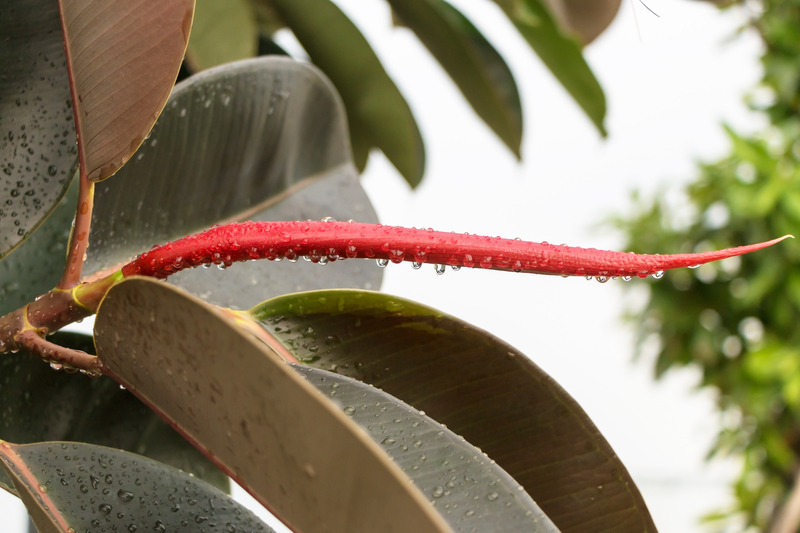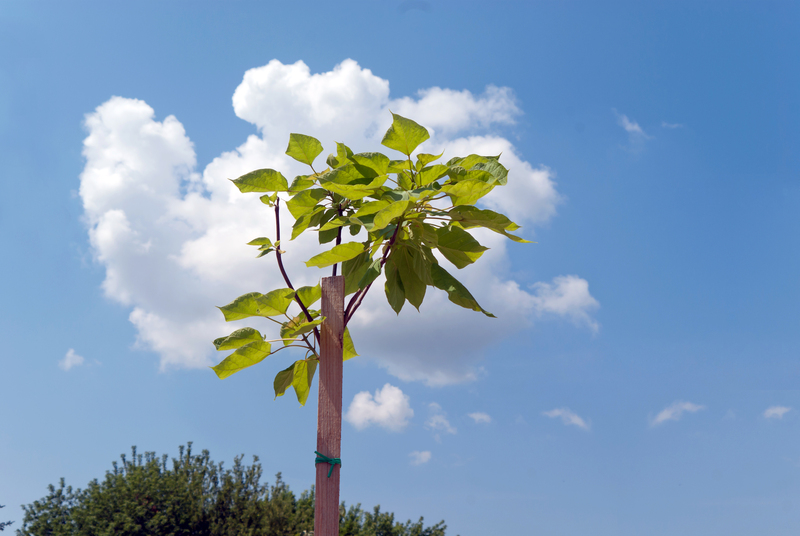Top Methods for Removing a Tree Stump from Your Yard
If you've recently cut down a tree in your yard, you're likely left with the challenge of dealing with the unsightly stump. Tree stump removal can seem like a daunting task, but there are various effective techniques available for homeowners of every skill and budget level. In this comprehensive guide, we'll explore the best ways to remove a tree stump from your yard, discussing both manual and mechanical methods, and highlighting the pros and cons of each approach. By the end of this article, you'll have a clear understanding of the most efficient tree stump removal methods for your specific situation.

Why Should You Remove a Tree Stump?
- Safety: Stumps can be tripping hazards, especially for children and elderly family members.
- Pest Prevention: Decaying stumps can attract termites, carpenter ants, and other unwanted insects.
- Curb Appeal: A leftover stump can detract from the overall look and value of your property.
- Hindrance to Landscaping: Stumps can get in the way of lawn care and future landscaping projects.
- Regrowth Risks: Some tree stumps can continue to sprout new shoots, leading to unwanted growth.
Factors to Consider Before Attempting Stump Removal
Before selecting a method for removing a tree stump from your yard, take these factors into account:
- Size and Age of the Stump: Larger and older stumps are generally harder to remove.
- Tree Species: Some tree types have deeper or more complex root systems.
- Location: Stumps near buildings, fences, or utility lines may require extra caution.
- Your Budget and Equipment: Certain methods are more cost-effective or require special tools.
- Time Frame: Some techniques are quicker than others; chemical methods take longer to work.
Top Methods for Removing a Tree Stump from Your Yard
1. Manual Tree Stump Removal
If you're looking for a cost-effective and environmentally friendly tree stump removal option, manual removal is a tried-and-true approach. While it can be labor-intensive, it works well for small-to-medium-sized stumps.
- Tools Needed: Shovel, mattock (pickaxe), axe, pruning saw, and sometimes a digging bar.
- Step-by-Step:
- Use a shovel and mattock to dig around the stump and expose the roots.
- Cut through the roots with a saw or axe. Remove as many roots as possible.
- Wiggle the stump back and forth to loosen it. Use leverage with a digging bar if necessary.
- Continue cutting roots and pulling until the stump is free.
Pros: No chemicals or heavy machinery required; immediate results.
Cons: Very labor-intensive and time-consuming for large stumps.
2. Chemical Stump Removal
For those looking for a less physically demanding technique, chemical stump removal might be the perfect solution. This method uses commercial stump removal products (potassium nitrate or similar) to accelerate the decay process.
- Tools Needed: Drill, safety gloves, stump remover chemicals, water, axe or chainsaw (optional).
- Step-by-Step:
- Drill several deep holes into the stump, focusing on the top and any exposed roots.
- Fill the holes with the recommended chemical stump remover.
- Add water as instructed to activate the process.
- Wait several weeks to months for the stump to soften and decompose.
- Once rotted, break apart and remove the remaining wood with an axe or shovel.
Pros: Minimal physical effort; no need for heavy machinery.
Cons: Slow process; chemicals must be used carefully (keep away from pets and children).
3. Stump Grinding
When dealing with large or stubborn stumps, stump grinding is a fast and effective mechanical solution. Professionals often offer tree stump grinding services, but handy homeowners can also rent grinders from garden centers.
- Tools Needed: Stump grinder, safety gear (goggles, gloves, ear protection).
- Step-by-Step:
- Clear the area of rocks, debris, and yard decorations.
- Position the stump grinder above the tree stump.
- Engage the grinder, moving it side-to-side, to shave down the stump.
- Grind the stump below the surface, typically 4-6 inches deep.
- Fill in the hole with soil or mulch.
Pros: Quick and thorough; works on large stumps.
Cons: Equipment rental cost; risk of injury if used improperly.
4. Burning the Tree Stump
Another known method for stump removal is burning. This process involves setting the stump on fire (with careful planning and legal consideration), which will gradually turn it to ash.
- Tools Needed: Drill, kerosene or fuel oil (never gasoline), matches or lighter, safety gear, metal barrel (optional).
- Step-by-Step:
- Drill holes into the top and sides of the stump to increase airflow.
- Pour kerosene or fuel oil into the holes and allow it to soak for several days.
- Surround the stump with rocks or a metal barrel for fire control.
- Ignite the stump; monitor the fire at all times until it burns down.
- Once cool, break up and remove any remaining material.
Pros: Inexpensive; works well on dry and small stumps.
Cons: Fire hazard; may be subject to local fire bans; not suitable in drought-prone areas.
5. Natural Decay (Easiest But Slowest Method)
If you aren't in a rush, simply letting nature take its course is another way to get rid of a tree stump. Natural stump decomposition involves speeding up the decay by fostering a moist, dark environment that encourages fungi and microbes.
- Step-by-Step:
- Cut the stump as low to the ground as possible.
- Drill deep holes and fill with compost, fertilizer, or soil.
- Cover the stump with a tarp and keep the area moist.
- Wait several months to several years for the stump to rot.
- Remove the soft, crumbly wood as it decomposes.
Pros: No effort or cost; environmentally friendly.
Cons: Extremely slow; stump remains an eyesore for some time.
6. Hiring Professional Stump Removal Services
Sometimes, especially with large stumps or challenging locations, your best bet is to call a professional stump removal company. This ensures safety, quick turnaround, and a hassle-free experience.
- What to Expect:
- Site assessment and estimate.
- Equipment setup (often a stump grinder).
- Efficient removal and clean-up.
- Advice on filling and reseeding the area.
Pros: Convenience; expert knowledge; safety; quick results.
Cons: Professional service cost; may need to schedule in advance.
Alternative and Eco-Friendly Stump Removal Methods
There are creative and environmentally conscious ways to deal with a remaining tree stump if you prefer not to remove it entirely.
- Stump Art or Planters: Turn the stump into a garden feature by hollowing it out and filling it with flowers or herbs.
- Mushroom Cultivation: Inoculate the stump with edible mushrooms to speed up decay and harvest a crop!
- Wildlife Habitat: Leave the stump as a natural shelter for insects and small animals, supporting local ecosystems.
Safety Tips & Environmental Considerations
Stump removal can be physically demanding and sometimes risky. Keep these safety and environmental tips in mind:
- Always wear protective equipment: gloves, goggles, long sleeves, and sturdy shoes.
- Avoid using gasoline to burn stumps. Kerosene or fuel oil is safer, but still exercise caution.
- Check for underground utilities before digging or grinding.
- Read and follow all labels when using chemical stump remover products.
- Research local ordinances and fire bans before burning any tree stumps.
- If using a professional service, ensure they are licensed and insured.
Frequently Asked Questions (FAQs) about Tree Stump Removal
How long does it take to remove a stump naturally?
Naturally decaying a stump can take anywhere from six months to several years, depending on the tree species and environmental conditions.
Can I remove a tree stump by myself?
Yes, DIY stump removal is possible, particularly for small or medium stumps. Manual digging, chemical decay, or burning are all viable for handy homeowners. For large stumps, equipment rental or professional help is safer and quicker.
Is it necessary to remove tree roots after stump removal?
While most methods focus on the visible stump, some roots may remain. If roots are extensive and you plan to replant or landscape, you may need to dig out major roots as well.
Are chemical stump removers safe for the environment?
Most commercial stump removers are formulated to minimize harm, but some contain chemicals that could impact soil or nearby plants. Always follow manufacturer instructions and avoid overuse.
How much does professional stump removal cost?
Costs vary depending on stump size, location, and removal method. As of 2024, most homeowners pay between $100 and $400 per stump for professional tree stump grinding or removal.

Conclusion: Choosing the Best Tree Stump Removal Method for Your Yard
There are many options when it comes to removing a tree stump from your yard. Your choice will depend on the stump's size, your physical ability, timeline, budget, and commitment to sustainability. Manual stump removal is effective but laborious, stump grinding is fast and professional, while chemical removal offers a hands-off approach. Burning is an option in certain areas, and natural decay works if you're in no hurry. For those who'd rather not tackle the task, hiring a professional tree stump removal service guarantees safety and speed.
Whatever method you choose, be sure to follow proper safety measures and research your local regulations. With the right approach, you'll restore your yard to its full beauty--and maybe even gain a little inspiration for your next landscaping project!
Keywords and Variations Used
- Tree stump removal
- Removing a tree stump from your yard
- Tree stump grinding
- Stump removal techniques
- Stump removal options
- Chemical stump removal
- DIY stump removal



